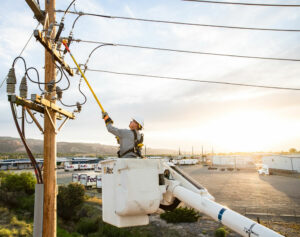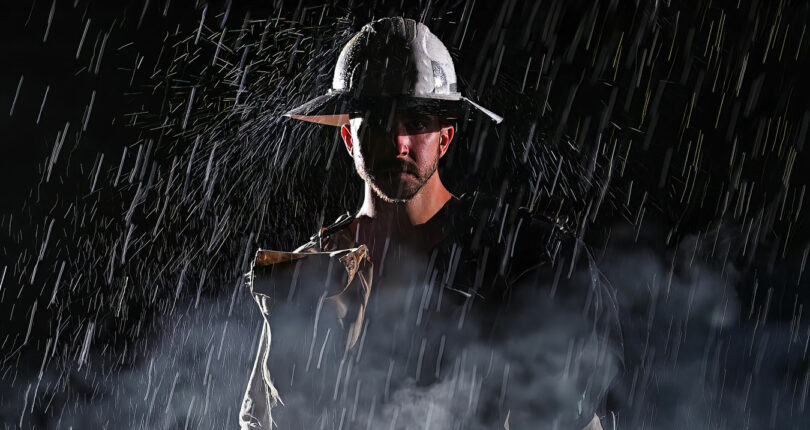You probably don’t think about them until your power goes out, but electric lineworkers protect our homes and communities 24/7. Like other first responders who keep us safe, lineworkers endure all kinds of weather and challenging conditions.
On April 18, we celebrate Lineworker Appreciation Day to honor the people who power life. Here are some quick facts about lineworkers and the work they do.
LINEWORKER HISTORY
Lineworkers first appeared during the 1840s rush to spread telegraph service across the U.S., stringing wires between trees and other natural objects. It didn’t take long for everyone to realize tall poles were safer and more practical.
WHAT ELECTRIC LINEWORKERS DO
Restoring electricity after a power outage is just one of the many duties of lineworkers, who also:
- Install and connect new power lines to homes and businesses
- Maintain and perform upgrades to improve our electric grid
- Diagnose and pinpoint power delivery issues
- Plan and manage large-scale projects
- Ensure safe work practices in often challenging conditions
Lineworkers are responsible for maintaining and upgrading the nation’s electric grid that connects more than 7,300 power plants to 145 million consumers through 60,000 miles of high-voltage lines, millions of miles of distribution lines, and more than 50 million transformers.
GEARED FOR SAFETY
Lineworkers climb with up to 40 pounds of safety gear and tools. That’s like carrying a 5-gallon water jug. Here’s what lineworkers typically wear to stay safe while working:
- Hard hats
- Safety glasses
- Flame-resistant clothing
- Arc flash protective clothes
- Rubber gloves and sleeves
- Climbing belts
- Fall-protection harnesses
ONE HOT STICK
One essential tool for lineworkers is the hot stick, an insulated fiberglass pole used to safely move energized wires and other equipment. Hot sticks vary in size depending on the job.
THE WILD SIDE OF WORK
Squirrels and snakes are a major cause of power outages, and lineworkers encounter plenty of both while working. They’ve also been known to rescue kittens that climbed too high in a tree and curious bears on top of utility poles. When your office is the great outdoors, these encounters are part of the job.

Electric lineworkers use a variety of tools and gear to get the job done. Photo courtesy of NRECA.
ON-THE-JOB TRAINING
Described by the U.S. Energy Department as one of the country’s highest-paid professions that doesn’t demand postsecondary education, becoming a journeyman lineworker typically requires a high school diploma or equivalent, training, and a paid apprenticeship, which typically spans four years. Apprentice lineworkers receive hands-on training and experience in the field before advancing to journeyman status. Lineworker salaries range from $40,000 to $144,000, depending on location, skill set, and experience.
INSPIRING SAFETY
Roughly 60,000 lineworkers hit the road annually to respond to devastating storms and the damage they leave behind. In addition to extreme weather exposure, lineworkers face a variety of dangers, including electric shock, falls from elevated work locations, and roadside traffic accidents. High injury rates among early lineworkers led to the creation of apprenticeship programs and organized labor throughout the industry.
Safety is always the No. 1 priority, which is why lineworkers continually receive training to stay mindful of safety requirements and up to date on the latest equipment and procedures.
Lineworkers power our lives. The next time you see one, remember to thank them for the essential work they do.
For more than four decades, business writer Scott Flood has worked with electric cooperatives to build knowledge of energy-related issues among directors, staff, and members.

